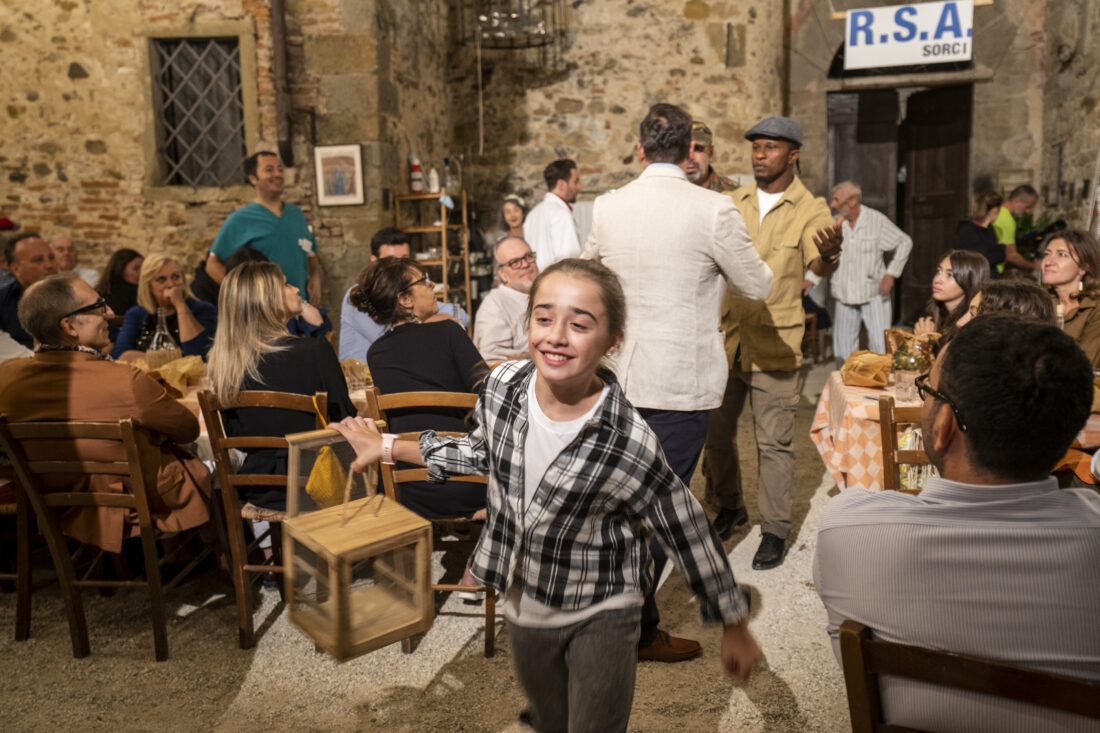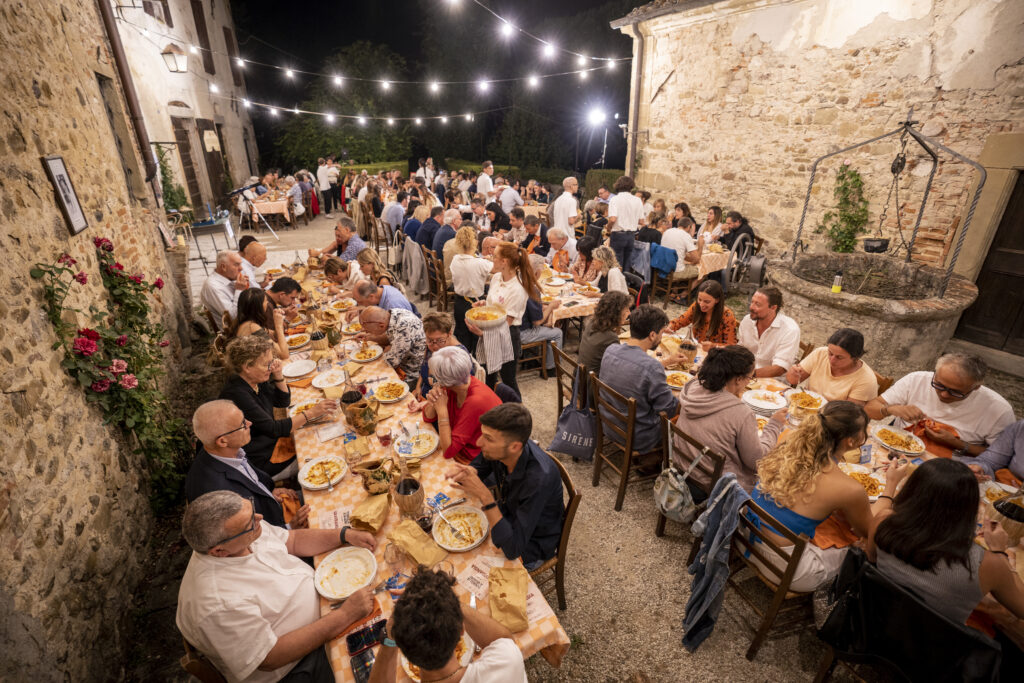
Pregnanxiety
I love my village. And what I love the most is not the food, or the wine, or the rolling Tuscan hills, or the thousand years of defensive hilltop architecture, but the spirit of the place. I treasure the events that mark the seasons every year—festivities profoundly of this place, created by this place, and for the locals. Almost every month something rolls around. More in the summer. The fall festival honoring our patron saint and a fat spaghetti, called bringoli, that’s only made in our town. The vintage bicycle race that attracted over 900 participants this year. The local Vespa club that dresses in Santa costumes and races into the square on Christmas Eve, at exactly 6pm, to distribute toys to the assembled kids under the enormous Christmas tree. Carnivale, when hundreds of spectators dress in costume and watch the farmers pull floats with their freshly-washed tractors. The polenta festival to cheese rolling, we are always busy.
But in late summer, the local play, Tovaglia a Quadri, has a special place in my heart. The play is written fresh every year by Andrea Merendelli and Paolo Pennacchini who delight in collecting everything from the small details of daily life to huge societal trends and synthesizing them into a rapid-fire, witty, and farcical play, the acts separated by aperitivi, pasta, the main course, and dessert. It runs for ten evenings, and they have done it for 28 years without a break.
The play takes place in the courtyard of a neighborhood castle dating from 1234 with long tables set in the middle. The action occurs all around the diners, with the sixteen actors popping out of windows to deliver lines, and walking through the middle of the diners. We booked four tickets together at one of the long tables and sat down to greetings by our dining neighbors and large, open flasks of red wine.

This year’s play, Gravidansia, is a mash-up of the Italian words for pregnancy and anxiety. It wraps the declining Italian birth rate (one of the lowest in the world), the difference in funding between the private and public health sectors, the economic and social reasons people are not starting families, and rodents, into one package. The premise is that the castle is now a state-funded care home for the elderly, the booming demographic. The presiding doctor trained as an OB-GYN, but with nobody having babies he now needs to work in elder care and is always worried about when the state funding will arrive, and if budgets will be cut further.
The swirling plot features an old, male farmer, who now dresses as a woman and is convinced that he is pregnant; two of our waiters shouting at each other while they serve us—a couple on the verge of a breakup as they face their bleak economic future together; a young professional couple who keep circling by the tables as they run laps, checking their times on fitness watches, and eating protein bars—treasuring their child-free lifestyle and too busy to have kids despite their uncle yelling out the window of the care home that he will give them the best apartment on the village square if they provide heirs. Another doctor arrives on the scene, who trained as an OB-GYN with our protagonist, but paths have diverged. He founded a group of very successful, high-end private clinics providing fertility treatments.

All these plots soon center on a loose mouse, long bothering the facility, captured by the local exterminator. Instead of destroying the mice he has captured through the years, he has sold them to the fertility clinic the visiting doctor runs, to be used in genetic research. The doctor has brought the alpha mouse from his clinic in a small cage. She is the mother to a long, important line of mice and has stopped reproducing. The doctor is hoping that by introducing a wild mate she will regain interest in her procreational duties. He has come for the just-captured mouse for his new blood that will rejuvenate the line. The two are put in the same cage but ignore each other.
The visiting doctor goes inside the care home and is touched by the beauty of the place and the frescoes of the old castle as the older residents reminisce about how their families used to be living close to the land—brutally hard times but filled with life. The 11-year old daughter of our protagonist doctor is chased by the doctor and exterminator after she frees the two mice from the cage. The visiting doctor has a change of heart—only by releasing people, and mice, from their cages and returning to beauty and a sense of place will people want to continue the race. He wants to help turn this castle into a center for the beginnings of life, as well as endings.
I remain amazed how this is pulled off with local writers, director, and actors, many of whom I often see around town. I am understanding more every year, but am jealous of Sebastian who gets it all but can only translate highlights as it’s so rapid-fire, and the laughing crowd, enjoying every twist and turn.
In case you were worried about the mice, in the closing moment of the play one of the characters spots them on a rooftop, finally “getting along” rather well in their new, freed state.






Joan Finnie
August 14, 2024 at 12:48 amI have missed quite a few, Nancy, and am crushed. Can I sign up again as I don’t know how I missed them. You write so well. Looking forward to the book! Hast ye back to Claremont. Joan Finnie
Nancy
August 17, 2024 at 9:13 amAwwww, thanks!! I have been really bad about writing recently, so don’t think you’ve missed very many. I saw that you got the latest after my switch to Substack, so think everything is OK. I am going to put another one out tomorrow, so give me a shout if you don’t receive it. Hope you are well!!
Nancy
February 18, 2025 at 10:12 amI know, it’s a pretty funny corner of Italian food culture.